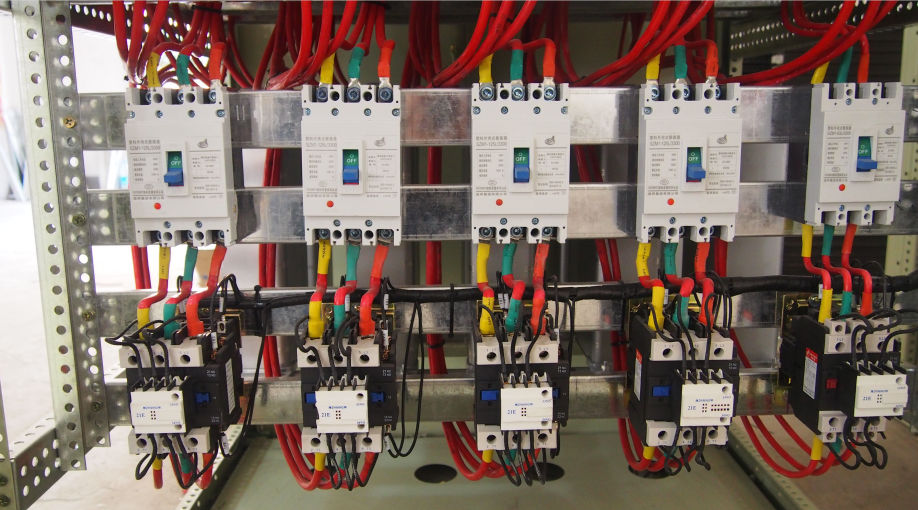The override tripping of Leakage protection switches
In many cases, the Subordinate leakage breaker does not trip! But the superior tripped!
Caused a large-scale power outage! Why is this? Today Jiangxi Yikai electric will talk about this issue with you.
Main situation of override trip
The main switch load capacity is less than the sum of the sub-switch load capacity
The main switch has a leakage protection device but the sub-switch does not.
When the leakage of the electrical appliance is greater than or equal to 30 mA, the main switch trips.
Superior and subordinate circuit breaker protection does not match, try to use circuit breakers of the same brand.
Frequent operation of the main switch under load leads to electric shock, carbonization, poor contact, increased resistance, increased current, and thermal trip.
The protection provided by the subordinate circuit breaker cannot correctly determine the fault (such as single-phase ground fault but no zero-sequence protection).
The shunt tripping time becomes longer due to the aging of the circuit breaker. A shunt tripping switch with a shunt tripping time less than the previous switch should be replaced.
Countermeasure for override trip
If a superior circuit breaker trips over, if it is determined that there is a shunt protection action, but the shunt circuit breaker has not tripped, then the shunt circuit breaker will be broken, and then the superior circuit breaker will be restored; Then, check whether there is a fault in the equipment within the power outage range.
If there is no fault, you can close the upper circuit breaker and try to send each branch circuit breaker one by one. When the power circuit breaker trips again when it is sent to a certain branch, it can be determined that the circuit breaker is a faulty circuit breaker. The line can be isolated, repaired and replaced.
To trip a circuit breaker, two conditions must be met. The first is that the magnitude of the fault current reaches the set value, and the second is that the duration of the fault current reaches the set length of time, so to ensure that the circuit breaker does not trip over the step, the current must be The set value and time set value cooperate well.
For example, the first-level circuit breaker overcurrent protection setting value is 700A, and the duration setting value is 0.6 seconds, then the second-level circuit breaker overcurrent protection setting value should be reduced by a certain proportion, such as the current setting value 630A, the time is set to 0.3 seconds.
In this case, if a fault occurs within the protection of the second-level circuit breaker, regardless of whether the fault current reaches the setting value of the first-level circuit breaker, because the fault current continues to 0.3. Seconds, the second-level circuit breaker is cut off , Less than 0.6 seconds of the first-level circuit breaker, so the first-level circuit breaker will not trip, which avoids over-step tripping.

The first is the type of protection.
Whether it is a short-circuit fault or a ground fault, it is the same reason, which is staggered by the current size and the length of judgment time.
Second, it should be said that the coordination in time is more important.
Because the fault current is likely to meet the protection setting value of the multi-stage circuit breaker at the same time.
Third, the protection setting of the circuit breaker has been set, and I have set the time.
Then, can this be guaranteed not to be overstepped? Not necessarily.
The time required for the circuit breaker to completely disconnect the fault current.
In addition to the basic judgment time, also adds the action time of the machine itself.
This length of time varies depending on the performance of the equipment of different manufacturers.
Because the protection time of the circuit breaker is millisecond Level, so this difference may also affect the coordination between circuit breakers.
That is to say, like the above example, the second-level circuit breaker should originally cut off the fault current in 0.3 seconds, so that the first level has no chance to operate, but the mechanical performance is too poor, it takes 0.4 seconds to completely open And before the second stage is completely opened, the first stage circuit breaker has detected the fault current for 0.6 seconds,so the first stage will also act, which leads to over-step tripping.
Therefore, to ensure that there is no overstepping trip, the actual operating time of the circuit breaker must be tested with the relay equipment, and the length of the actual test results to ensure the correct coordination.